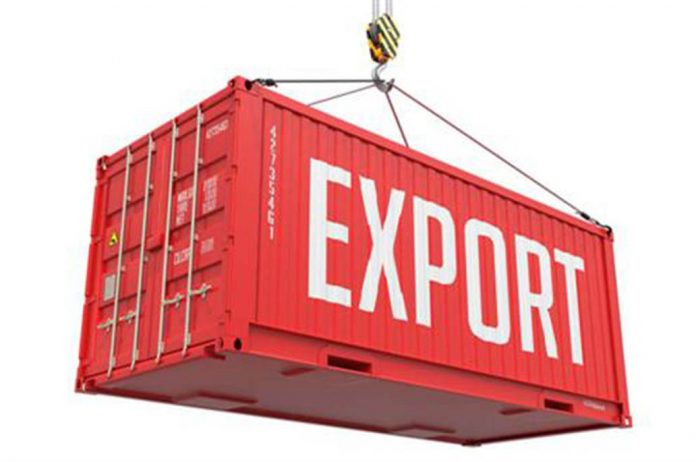Spanish exports of goods in the period January-October grew by 9.3% on the same period of the previous year to reach 229.8 billion euros, a new record for the period.
Imports rose by 11.3% to stand at 250.87 billion euros. Consequently, the trade deficit for the first ten months of the year amounted to 21.07 billion euros, 39.9% higher than the figure posted in the same period of 2016. It is the third best cumulative balance recorded for the first ten months of the year since 1998, only having been higher in 2013 and 2016. Spanish exports outperformed those of the Eurozone and the European Union.
The coverage rate (exports over imports) stood at 91.6% (93.3% in January-October 2016), which represents the third-best figure on record (only lower than in 2013 and 2016). In terms of volume, exports grew by 8.7%, since prices measured by Unit Value Indices rose by 0.6%; while imports grew by 6% following a 5% price rise.
The non-energy balance posted a deficit of 3.78 billion euros (compared with a deficit of 1.8 billion euros in the ten months to October 2016), and the energy deficit grew by 30.4% to 17.29 billion euros (versus a deficit of 13.26 billion euros in 2016).
The growth of Spanish exports between January and October was stronger than that of the Eurozone (7.6%) and the European Union as a whole (8%), and also outperformed Italy (7.7%), Germany (6.4%), the US (6.1%), China (5.6%) and France (4.7%). It was weaker than that posted by the United Kingdom (17%) and Japan (11.6%).
The main industrial sectors all posted export growth with the exception of the automotive sector: capital goods (accounting for 20.2% of the total) grew by 10.3%; food, beverage and tobacco (16.5% of the total) grew by 7.5%; chemical products (14.2% of the total) grew by 8.1%; and non-chemical semi-manufactured goods (10.2% of the total) grew by 9.7%. The automotive sector (16.3% of the total) shrank by 0.8%, particularly due to lower sales to the UK, Turkey and France.
To a great extent, the growth of imports is due to higher energy product prices and the consolidation of Spain’s economic recovery. Hence, imports of capital goods (21.4% of the total) increased by 10% year-on-year; chemical products (15% of the total) increased by 5.3%; energy products (13.2% of the total) by 40%; and those in the automotive sector (12.9% of the total) increased by 3.9%.
Exports to the EU (65.7% of the total) grew by 8.2% in the first ten months of the year. Exports to the Eurozone (51.6% of the total), grew by 9%, while those to the rest of the European Union (14.2% of the total) increased by 5.5%. This momentum was even greater in terms of exports to non-EU countries (34.3% of the total), which increased by 11.3% in this period. Export growth was recorded to all major regions: Oceania (24.6%), Latin America (15.2%), Asia excluding the Middle East (11.4%), North America (10.6%), Africa (10.5%) and the Middle East (2.1%).
By countries, it is worth noting the increased exports to markets with great potential, such as Argentina (55.3%), Nigeria (29.9%), China (24.7%), Australia (21.6%), the Philippines (18.5%), Morocco (17.6%), Mexico (15.9%), Brazil (13.3%), Canada (11.1%) and the United States (10.7%). Exports shrank to Venezuela (-56%), Algeria (-11%) and Egypt (-10.4%).
The autonomous regions with the strongest export growth were the Balearic Islands (76.3%), the Canary Islands (30.1%) and Asturias (23.2%). The largest declines were posted by Navarre (-4.4%), Castile-Leon (-2.7%) and Cantabria (-1.6%).
Figures for October
In October, Spanish exports of goods increased by 11.2% on the same month in 2016 to 24.24 billion euros. Imports increased by 13.2% year-on-year to 26.75 billion euros. As a result, a deficit of 2.51 billion euros was posted in October 2017, 37% higher than in the same month of 2016. The coverage rate stood at 90.6%, 1.6 points less than in October 2016.
The non-energy balance posted a deficit of 1.23 billion euros (versus a deficit of 620 million euros in October 2016) and the energy deficit grew by 5.8%.
Spain’s export growth in October (11.2%) was higher than both the Eurozone (9.2%) and the European Union (9.9%).
In October, the main contributions to export growth came from the energy products sector (which contributed 2.7 points), chemical products (1.9 points), capital goods (1.7 points) and non-chemical semi-manufactured goods (1.5 points). In contrast, the only sectors to contribute negatively were other goods (contribution of -0.4 points) and the automotive sector (contribution of -0.1 points).
In October 2017, exports to the European Union accounted for 64.7% of the total (65.7% in October 2016), an increase of 9.5%.
Exports to the Eurozone grew by 9%, while those to the rest of the EU increased by 11%. In terms of the main trading partners, it is worth highlighting the increased exports to the France (8.9%), Italy (8.6%) and Germany (6.3%), while exports to the United Kingdom shrank (-1%).





